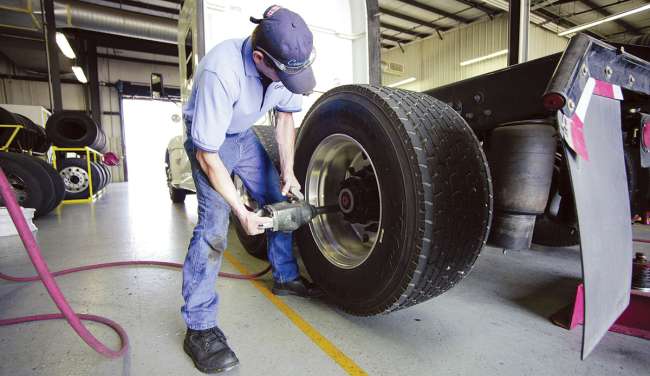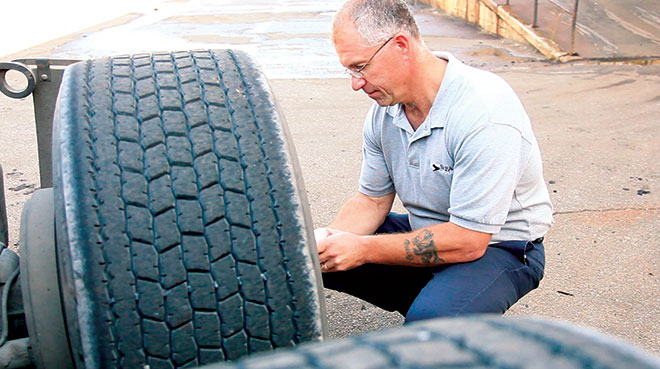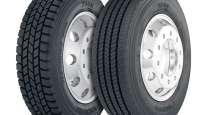Senior Reporter
British Columbia Truckers Gain Expanded Use of Wide-Base Single Tires

British Columbia has amended its regulations to allow fleets to use certain wide-base single tires with heavier axle loads, which furthers tire-harmonization efforts across Canada and revises a long-standing provincial policy that restricted the tire’s use.
Michelin North America was quick to applaud the shift by the BC Ministry of Transportation and Infrastructure.
The change allows heavy trucks in Canada to carry equivalent loads as those equipped with dual tires, according to Michelin, which noted the United States has no restrictions on the use of the wide-base single tire, available from multiple manufacturers.
“Heavy trucks now have the option to run competitive loads in an uninterrupted and eco-friendly fashion from coast to coast,” Jeff MacLean, president of Michelin’s Canadian business, said in a statement.
The ministry’s announcement capped a lengthy effort to secure the change, according to the British Columbia Trucking Association.

A technician checks the pressure in a wide-base retread. (Michelin Americas Truck Tires)
“The association has been working towards weight parity for new generation wide-base single tires for more than 10 years. We’re extremely pleased to have the weight increase we advocated, for fuel-efficiency gains, the related reduction of greenhouse gas emissions and harmonization with other provinces,” BCTA Director of Policy Cory Paterson told Transport Topics.
The decision increases the weight limit for wide-base single tires that are 455 millimeters or greater to 8,500 kilograms [18,739.29 pounds] from 7,700 kilograms [16,975.59 pounds].
Older wide-base single tires that are 445 millimeters to 454 millimeters wide still have a single-axle weight of 7,700 kilograms.
Besides discussions with the trucking association and tire manufacturers, the ministry conducted studies to assess the performance of new generation wide-base single tires.
The increase in weight allowance for the size 455/55R22.5 tire helps the trucking industry in meeting its greenhouse gas reduction requirements by reducing the number of total trips, according to the ministry. The tire’s increased fuel economy also contributes to reductions in greenhouse gas emissions.
“Wide-base tires first were introduced to the market by Michelin in 2000. It took several years for fleets to begin accepting them since issues with wheel outset had to be addressed as did problems with retreading them,” said Peggy Fisher, president of TireStamp, which provides tire pressure monitoring systems. “Today, they make up about 5% of the market and fleets in many kinds of operations use wide-base tires.”
The tires work exceptionally well in fleets with good tire maintenance, she said.
“The biggest advantage of wide-base tires is their reduced rolling resistance, which has resulted in reports of up to 4% improvement in fuel economy,” Fisher said.
Elsewhere in Canada, similarly revised regulations covering wide-base singles went into effect in Ontario in 2008 and in Quebec in 2009. In 2015, Manitoba revised regulations to allow load parity for heavy trucks that meet national load ratings while traveling provincial highways, according to Michelin.
As of July 1, 2017, all the prairie provinces had adopted regulations permitting the use of wide-base single tires at competitive loads.
In April 2018, New Brunswick announced that fleet members of the Atlantic Provinces Trucking Association can participate in a pilot project for load parity applicable to tire size 455/55R22.5.




